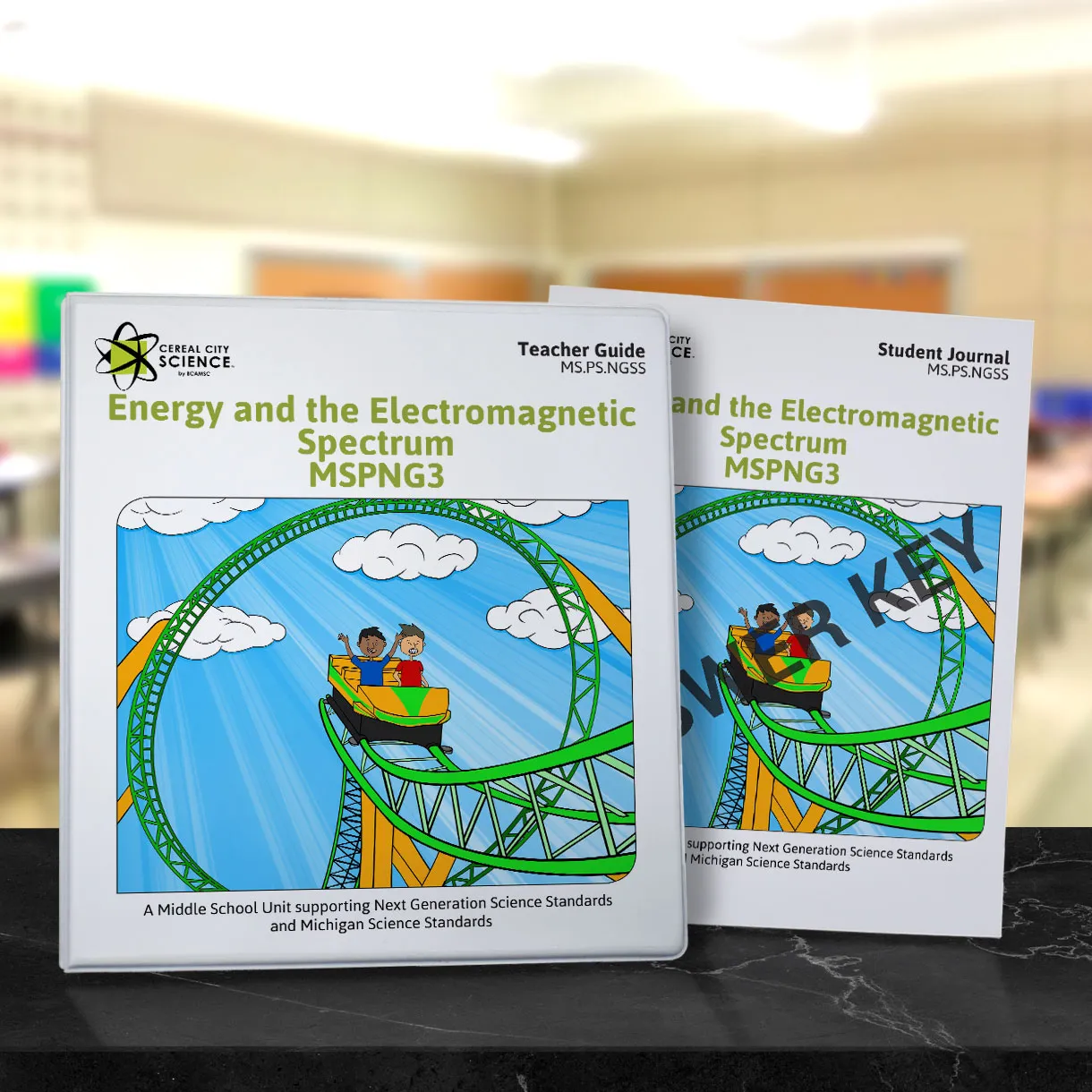Unit Details

MSPNG3 - Energy & the Electromagnetic Spectrum
Middle School - Physical Science - NGSS
In Energy and the Electromagnetic Spectrum, middle school students continue their exploration into energy by delving into the concept of energy and energy transfer through the exploration of the transfer of energy between kinetic energy and potential energy within the system of a roller coaster. Students will continue their study of energy and waves by planning investigations, testing devices, developing models, and looking at thermal and kinetic energy and their transfers. Students will use mathematical representations to describe waves and observe wave reflection, absorption, and transmission.
Student-led investigations throughout this unit will help them to answer the basic questions of “What is the relationship among energy transferred, the type of matter, the mass, and the change in the average kinetic energy of the particles as measured by the temperature of the sample?” and “What is the relationship to kinetic energy by the mass and speed of an object?”
Engineering Problem: Design a model of a roller coaster that explains the transfer of potential and kinetic energy.
Anchor Phenomenon: When grasping the bulb of the hand boiler, the liquid in the device begins to bubble and boil.
Driving Question: How does wrapping our hand around the hand boiler make the liquid bubble and move up the corkscrew tubing? How can we use our understanding of energy and matter to explain the phenomenon?
Engineering Design Challenge: Students design and build a solar oven.
Samples, Order Forms, and Packing Slip (PDF Files)
- Sample Teacher Guide and Student Journal - includes Standards and Unit at a Glance.
- MSPNG3 Packing Slip - Helpful list of the original unit contents.
- Quick Order Form - Teacher Guides, Student Journals, Material Kits, Spanish Student Journals, consumables, and organism codes.
- Spanish Student Journal Order Form (K-5 only)
- Trade Book Order Form
Classroom Resources and Curriculum Updates
- View Google Sheet - Updated 7/2/2025

